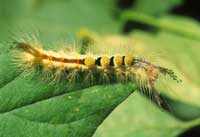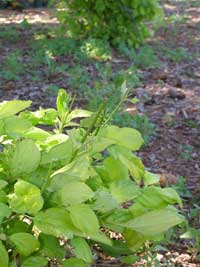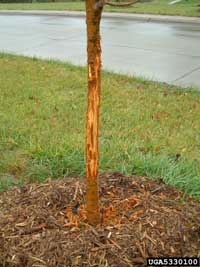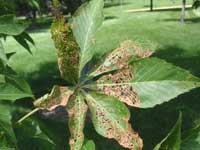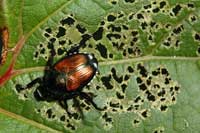Extension > Garden > Diagnose a problem > What's wrong with my plant? > Deciduous > Buckeye > Leaves or parts of leaves missing
Buckeye > Leaves > Leaves or parts of leaves missing
1 of 3
Whitemarked tussock moth
Orgyia leucostigma
- Young larvae windowpane feed (i.e. feed on one layer of leaf tissue between veins) giving them a lacelike appearance
- Older larvae consume entire leaves except the midrib and large veins
- Caterpillars have a red-orange head with two sets black tufts near the head; yellowish hairy body with distinct tufts of hair resembling a toothbrush on top of the body
- Full grown larvae are 1 ¾ inch long
- Damage by 2 generations, first from May to June and a second from August into September
- More information on Whitemarked tussock moth
2 of 3
Deer feeding/antler rubbing
- Long lines of shredded or peeled off bark along main trunk up to 3 feet off the ground from antler rubbing
- Feeding occurs from the ground up to 6 feet or slightly higher. Ragged edges, same as above, also if the bark is removed by a deer there will be no teeth marks
- Wood may appear shiny or "polished"
- Leaves and small branches (>1 inch diameter) cut off with a rough or ragged edge (Not a clean cut!)
- Damage is common only on young trees, old trees have thick bark and wide stem so are not used by deer for antler rubbing
- More information on Problems with deer
3 of 3
Japanese beetle
Popillia japonica
- Skeletonizes leaves, i.e. chews leaf tissue between the veins creating a lacelike appearance
- Damaged areas turn brown
- Attacks are common in sunny locations starting at the top of the tree and working down as they feed
- Adults are a metallic green; bronze wings; 5 white tufts of "hair" along their sides and two white tufts on the tip of the abdomen
- More information on Japanese beetle





